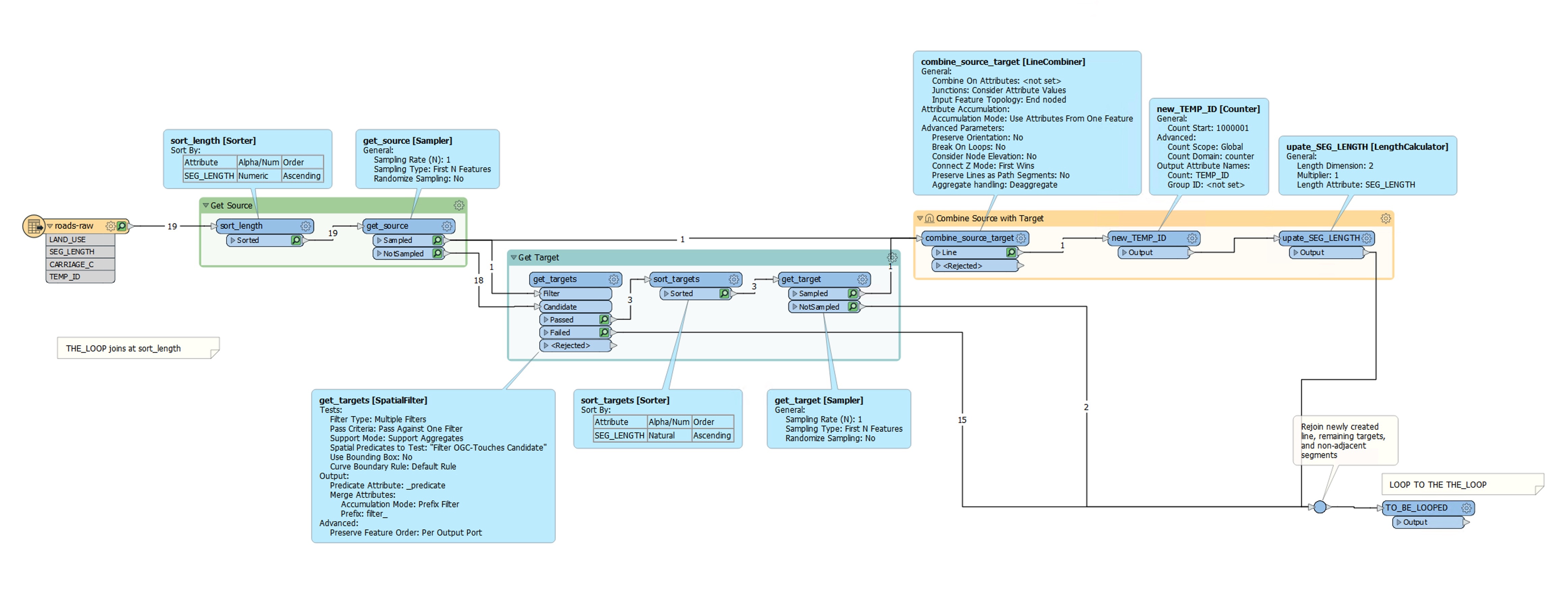I have a test Shapefile with 19 roads/segments. I want to merge all segments that are shorter than 200m with the shortest adjacent segment, and use the attributes of the adjacent segment for the new road segment. I've got most of the logic working, but can't get it to loop until there are no more segments less than 200m in length.
The attached workspace shows one iteration going from 19 records to 18 records.
Any pointers as to where I'm going wrong appreciated!










